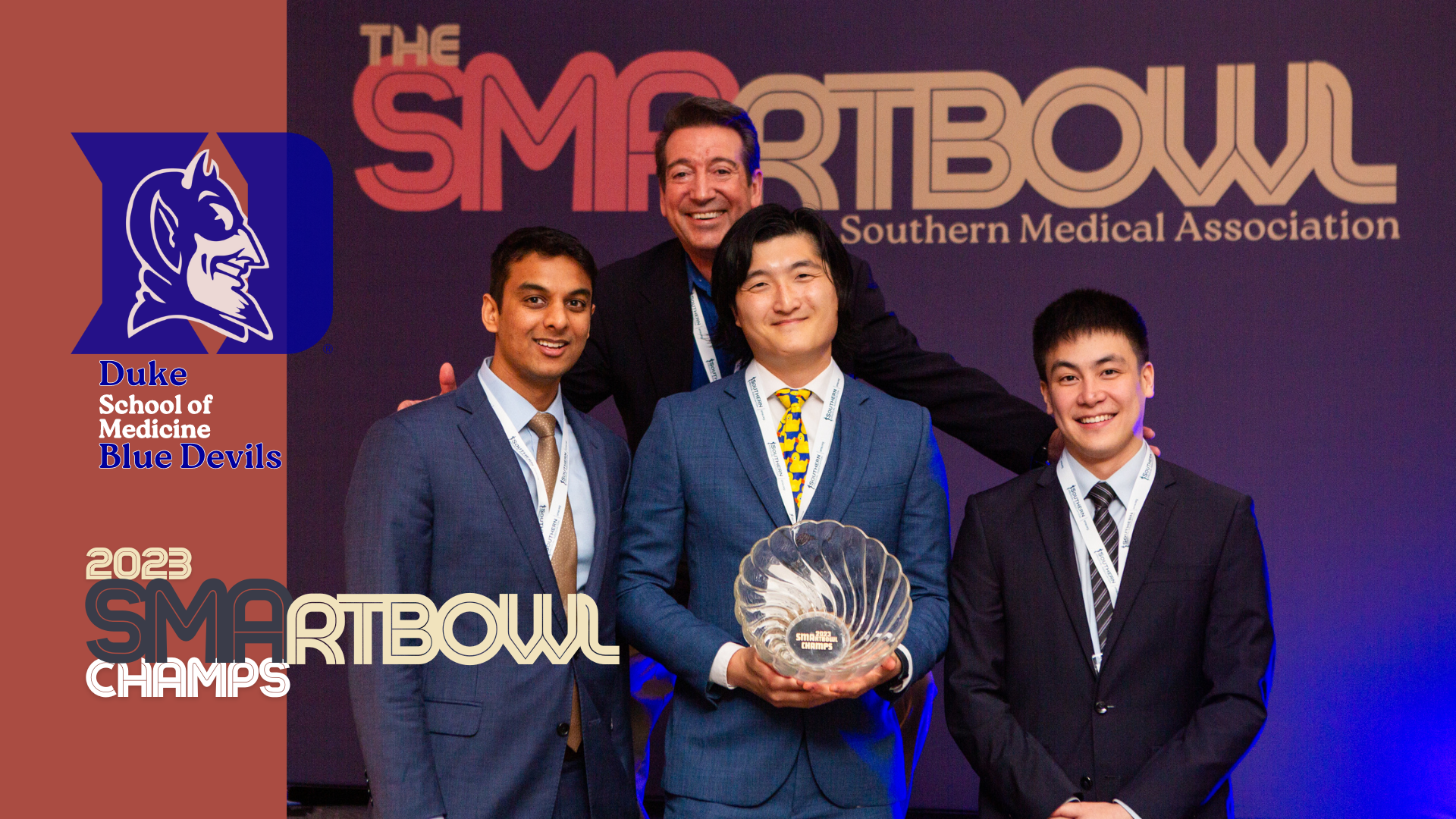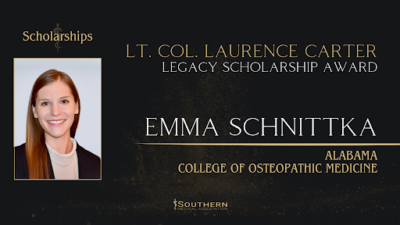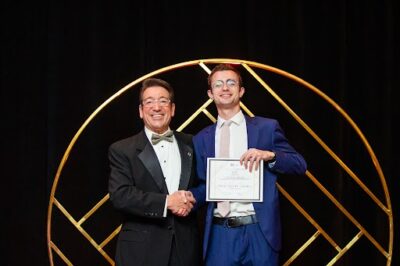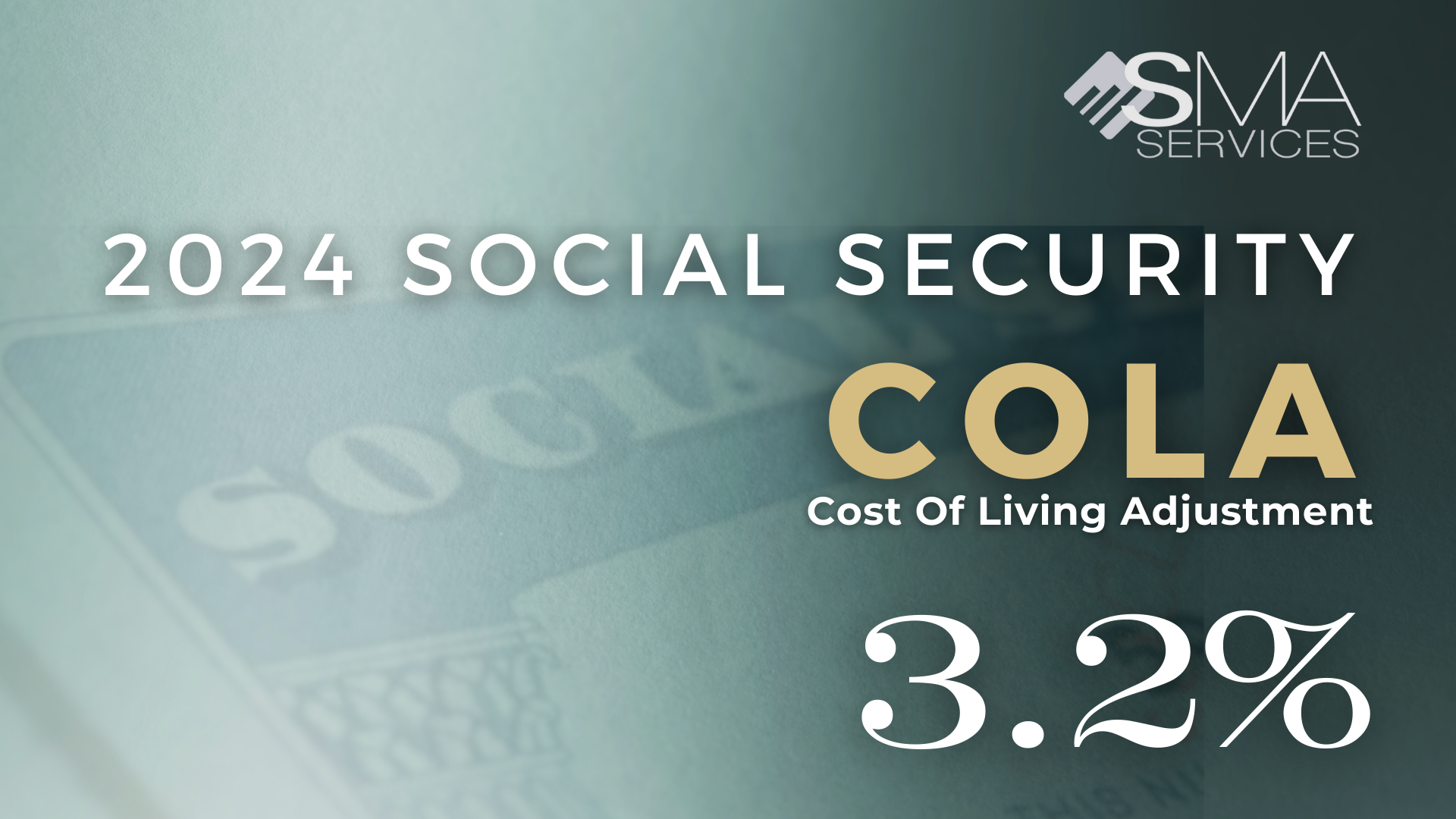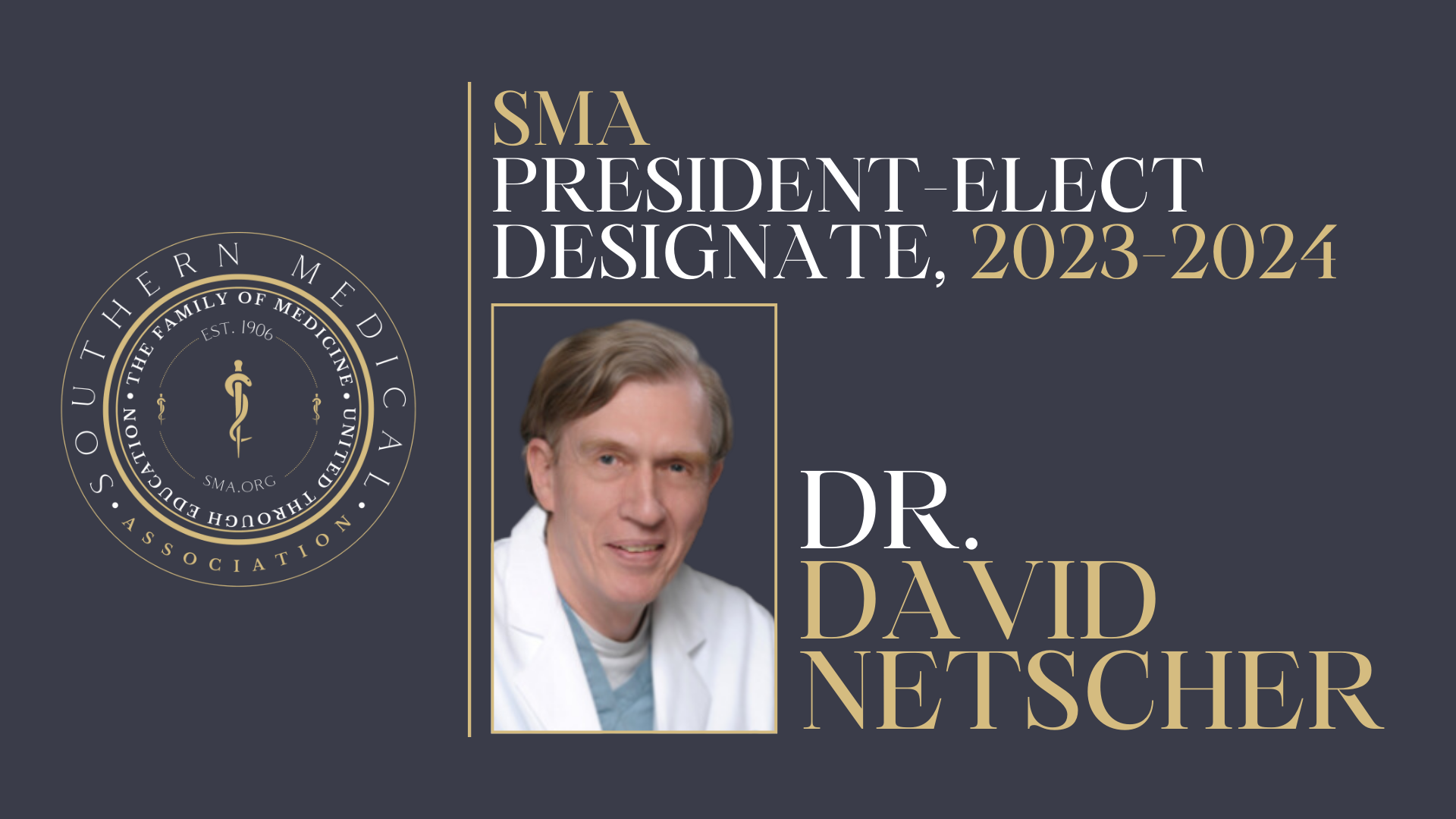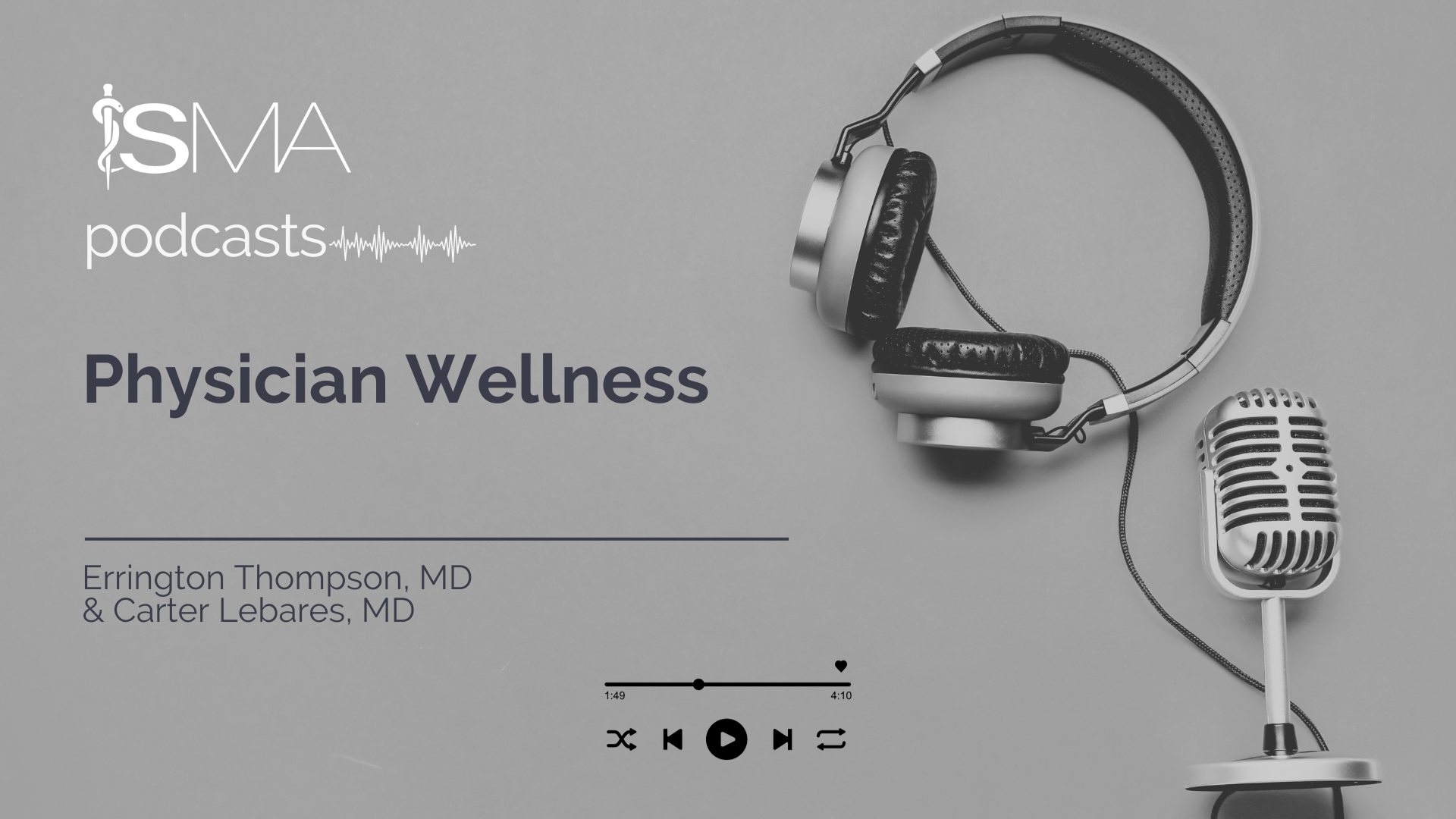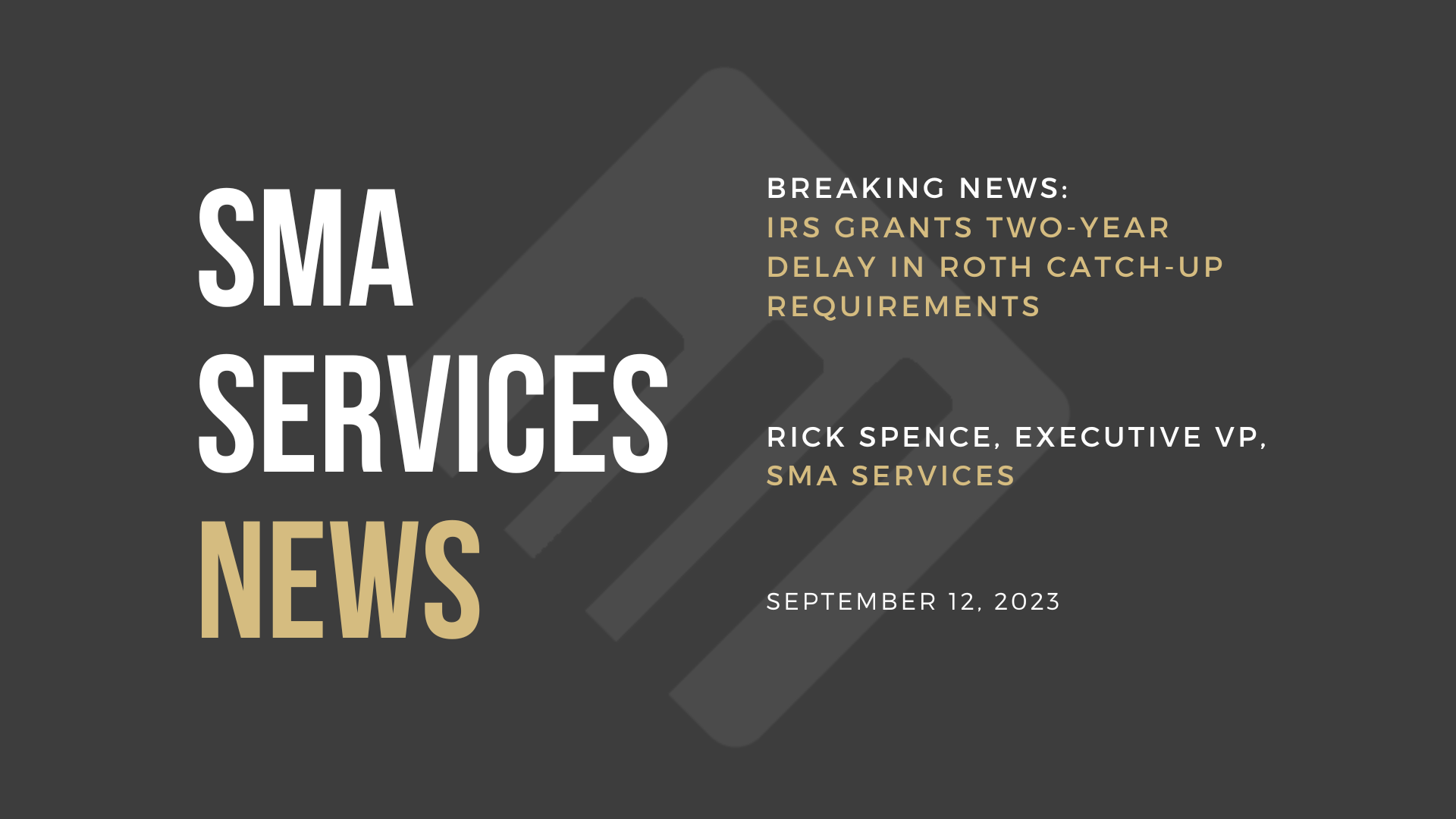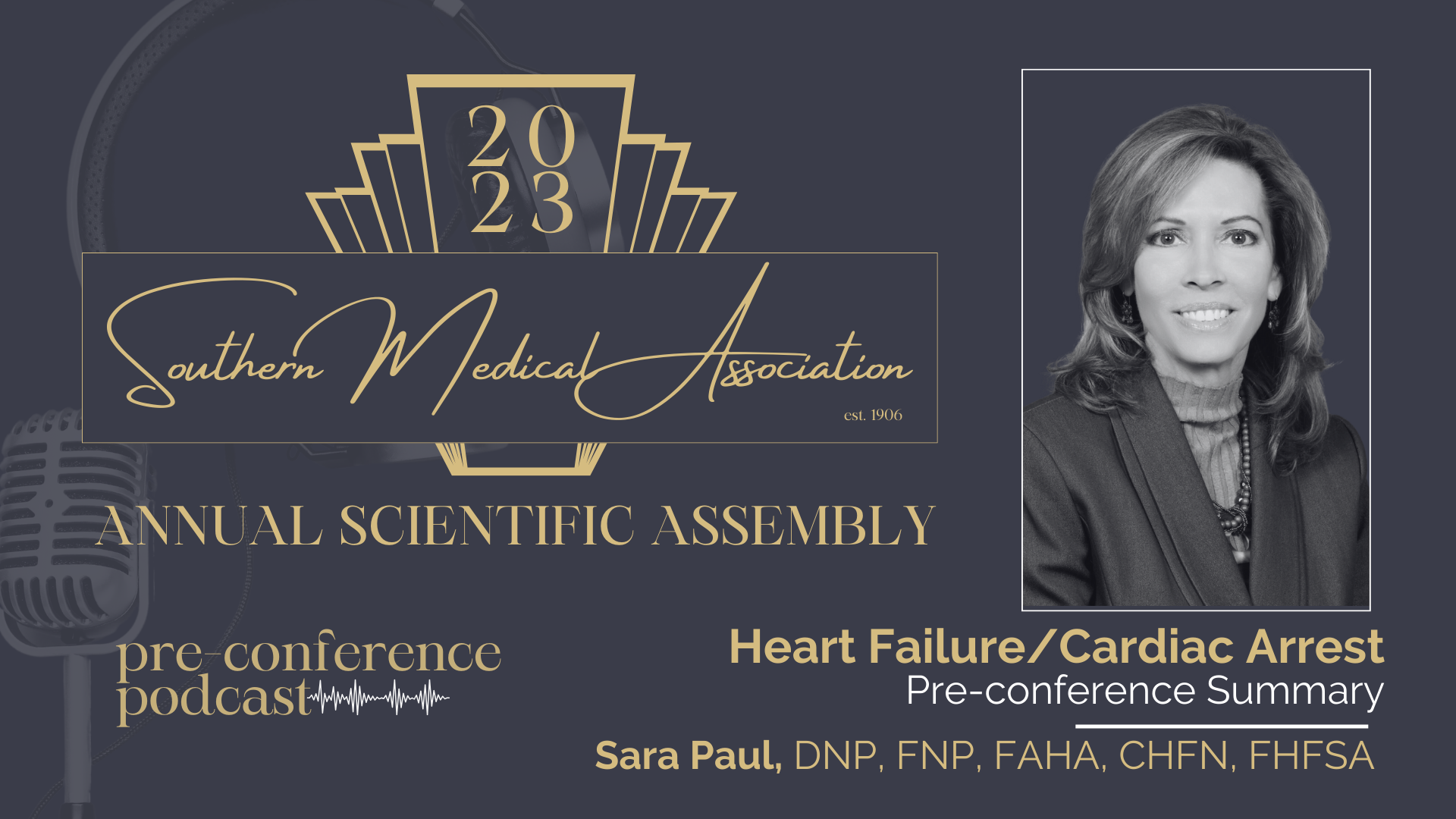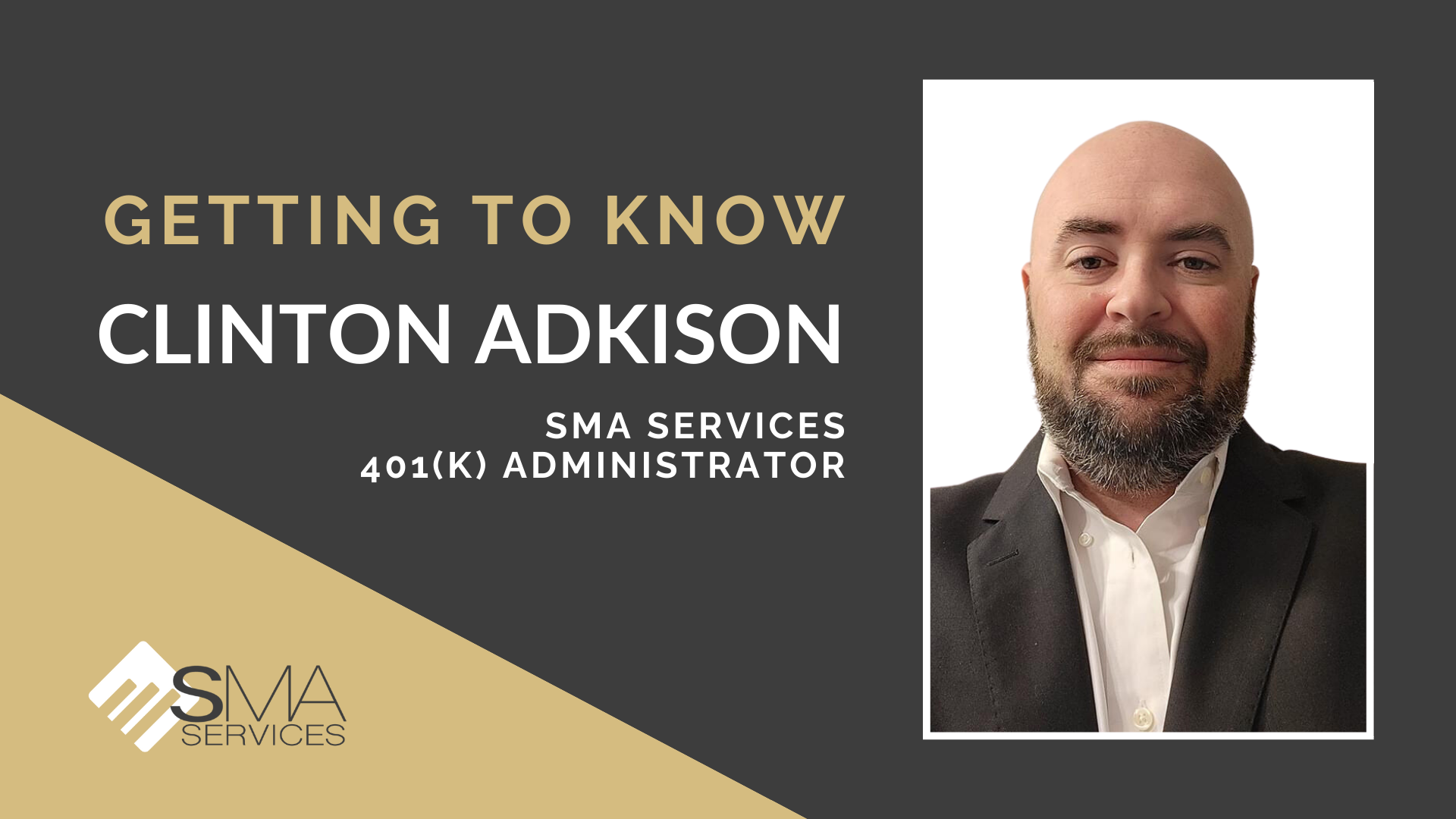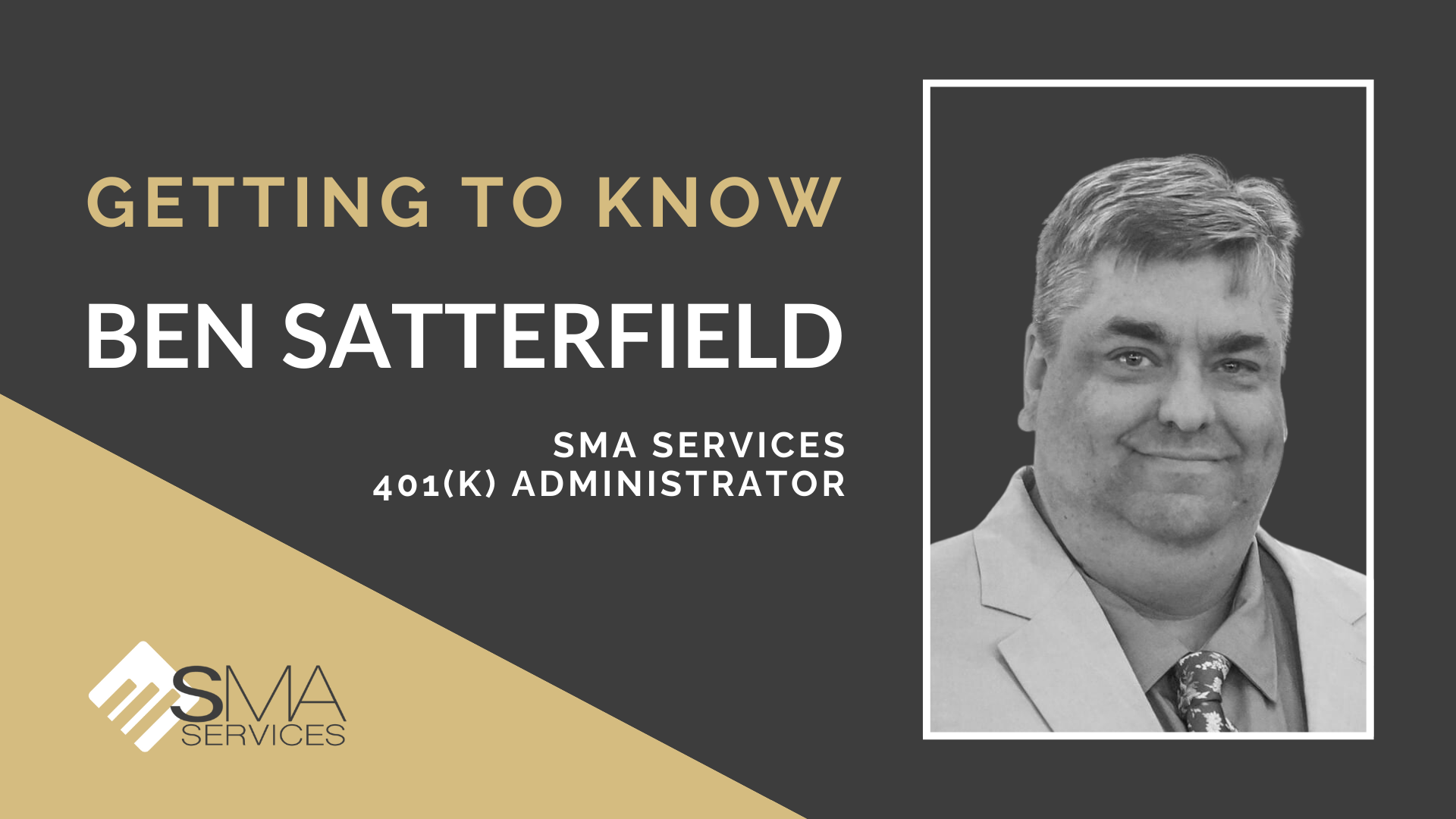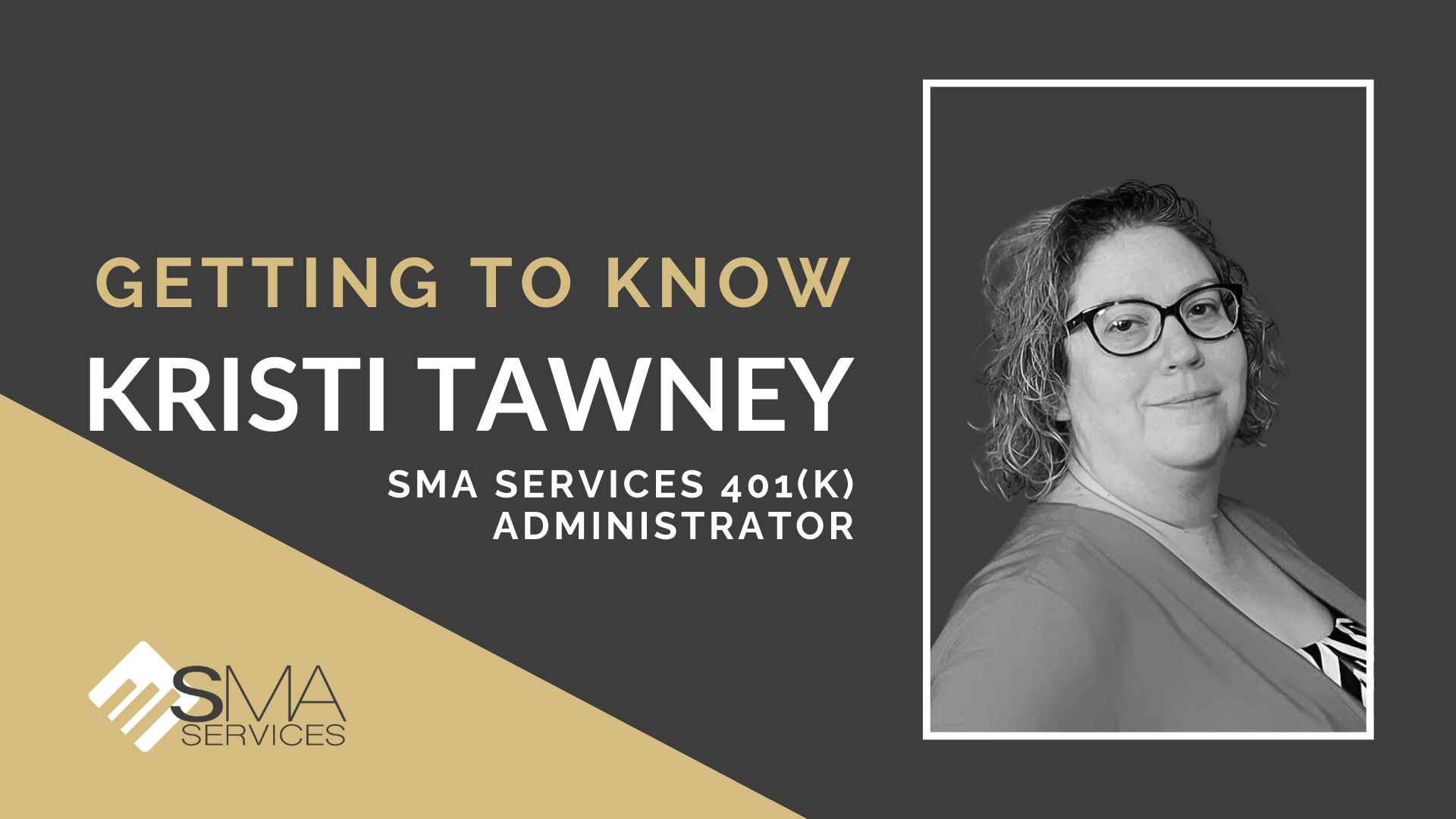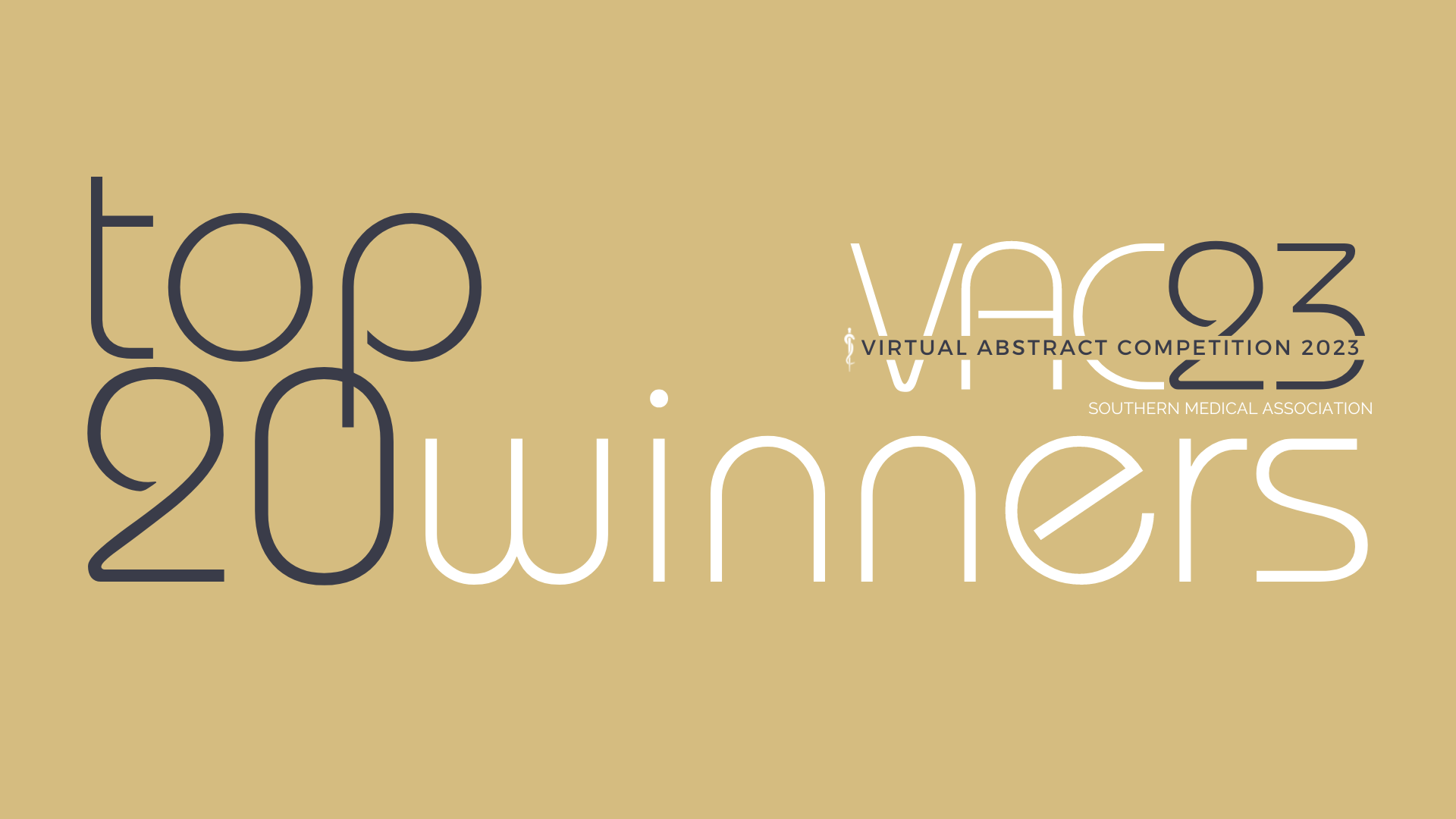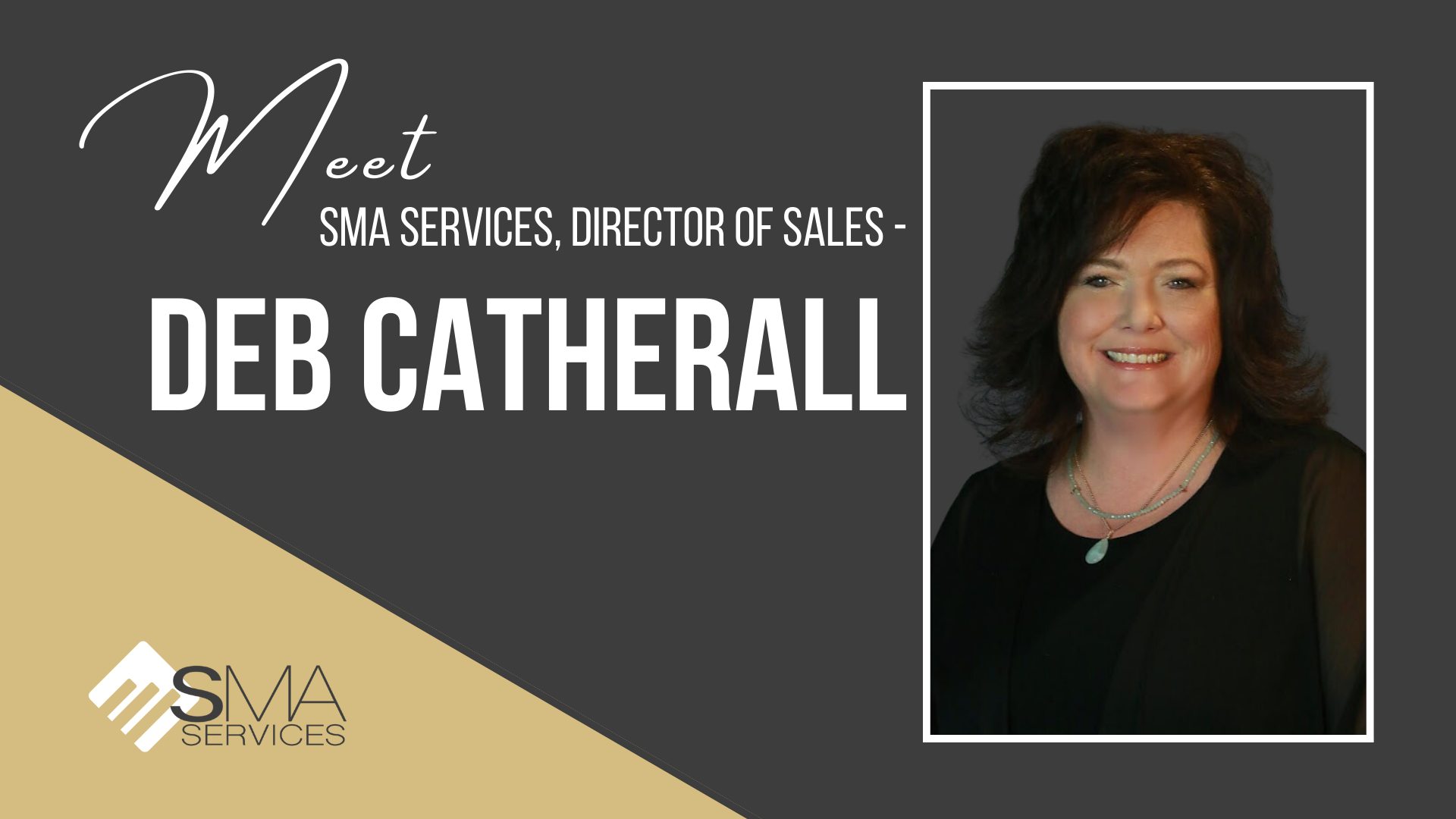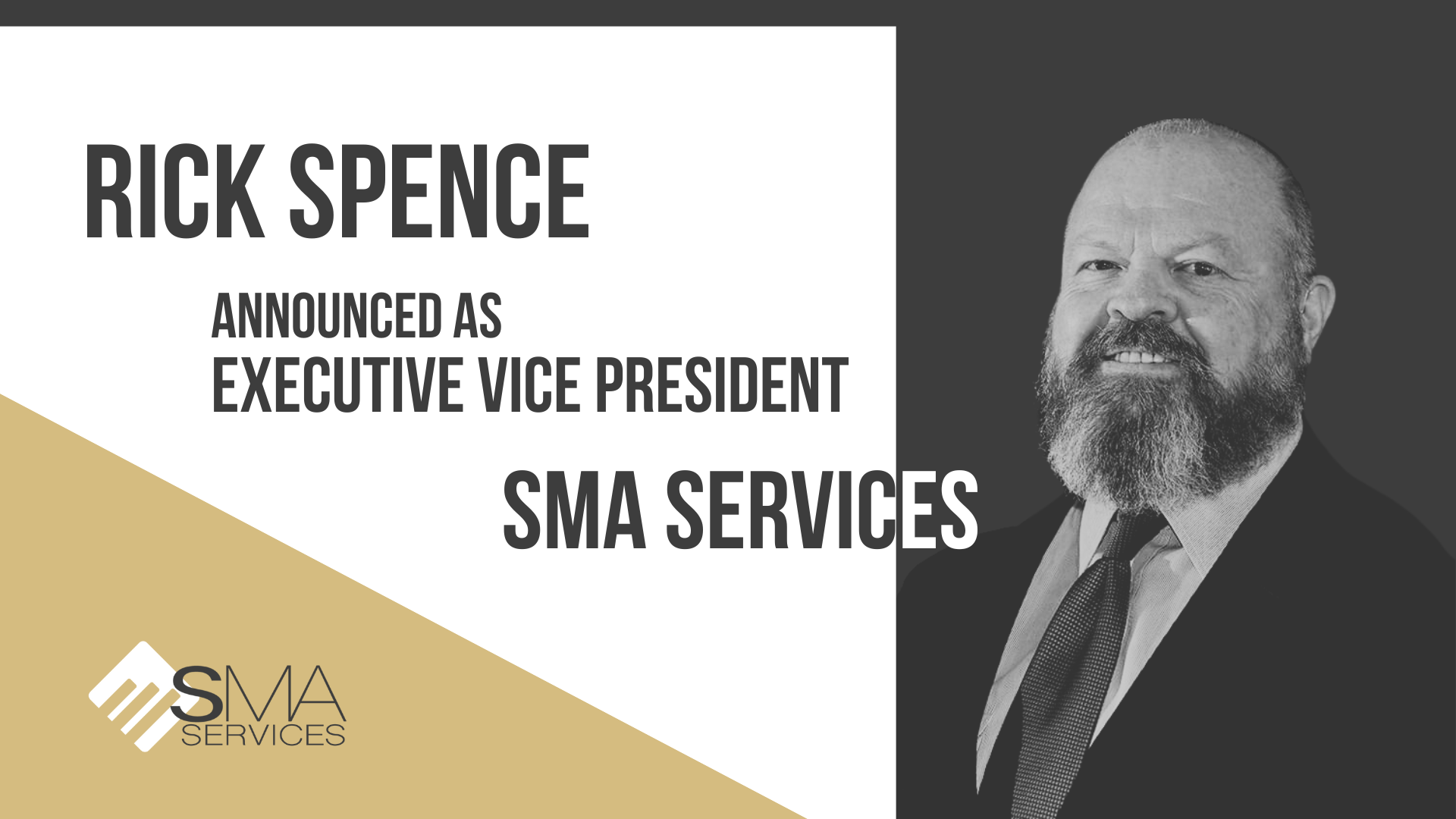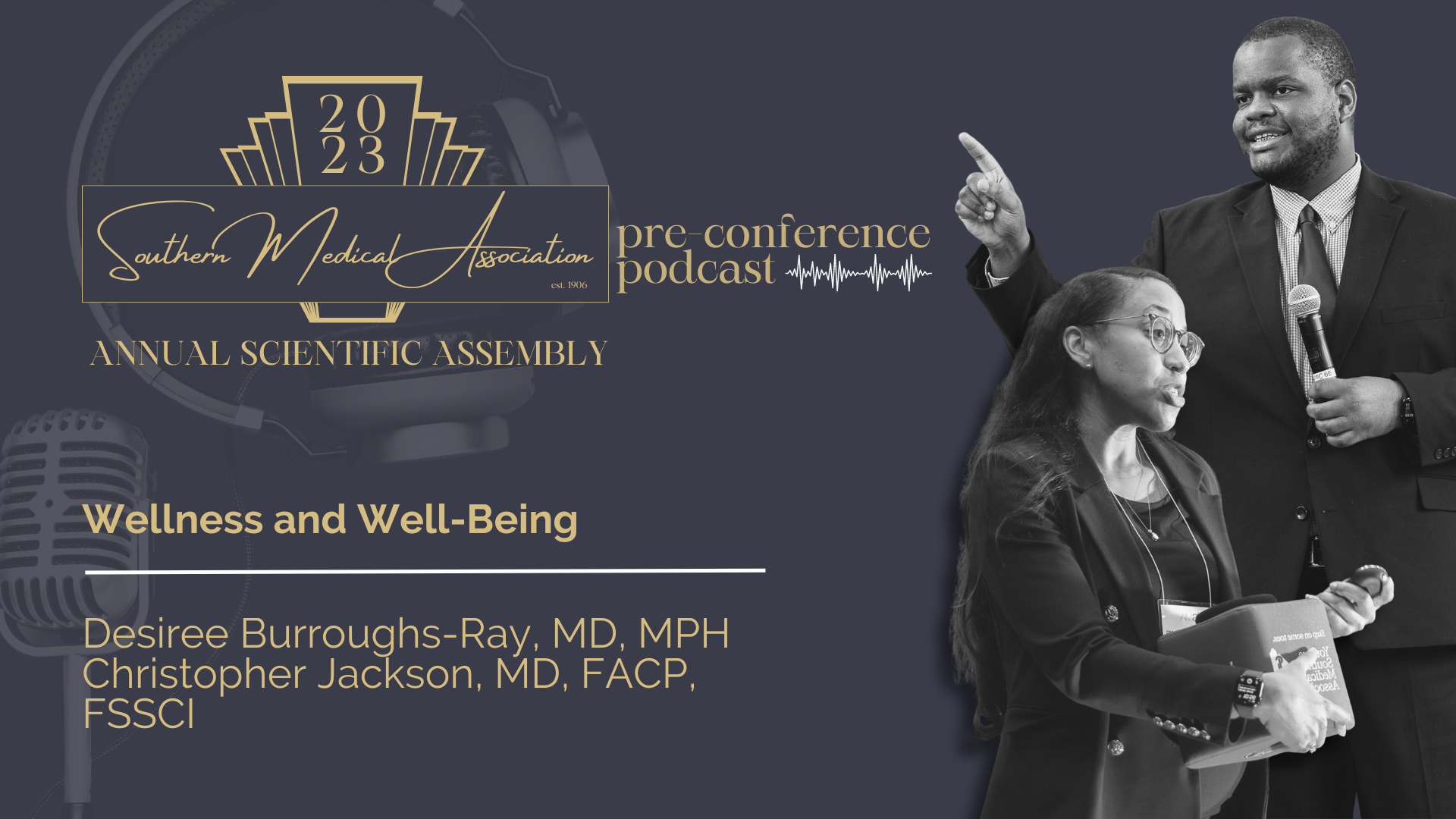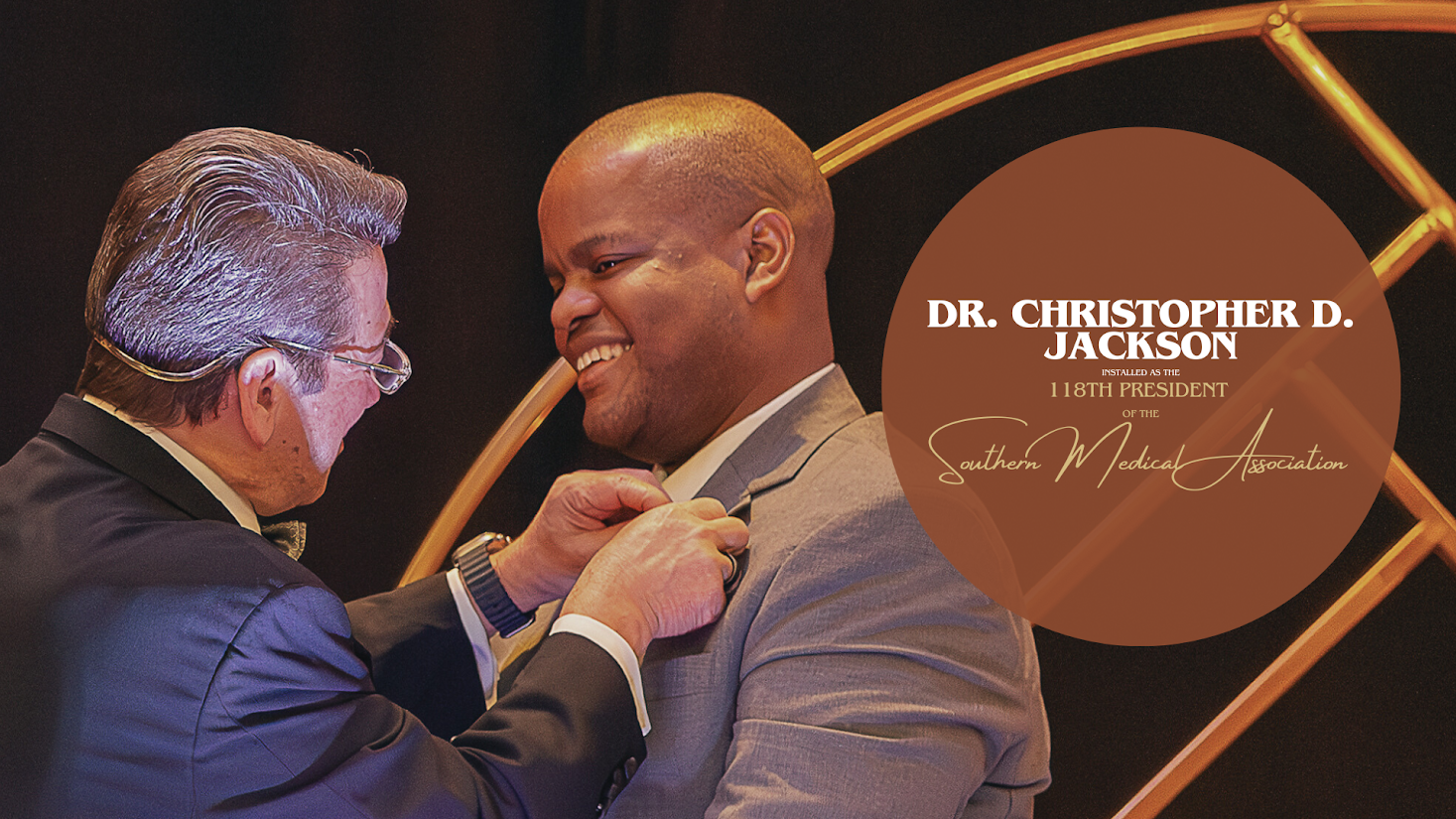
Dr. Christopher D. Jackson Installed as the 118th President of the Southern Medical Association
The Southern Medical Association (SMA) is pleased to announce the installation of Christopher D. Jackson, MD, FACP, FSSCI, as the Association’s 118th President. Dr. Jackson was installed October 28, 2023 during SMA’s Annual Scientific Assembly in Greensboro, North Carolina. With his installation, Dr. Jackson becomes the first Black President of SMA and will serve for the year 2023-2024.
“With his innovation and passion, Dr. Jackson is poised to lead SMA in a promising and exciting direction,” said Randy Glick, SMA Executive Director. “He believes strongly in education and lifelong learning, both of which are foundational pillars of the Association.”
Dr. Jackson serves as Associate Professor of Medicine, Assistant Dean of Student Affairs, and Associate Program Director for Curriculum at the University of Tennessee Health Science Center (UTHSC) Internal Medicine Residency in Memphis. A native of Augusta, GA, he graduated from Emory University with a degree in Biology and Sociology. He received his Doctor of Medicine degree at the Medical College of Georgia. He completed his internal medicine and chief residency year in patient safety and quality improvement at UTHSC before joining the faculty in the Division of General Internal Medicine and the Center for Health System Improvement in 2019.
Mentorship, including the development of a mentoring academy, will be a key priority during Dr. Jackson’s presidential tenure. “Mentorship doesn’t just end with medical students and residents. Practicing physicians and even those who are nearing the end of their career often need guidance on the next steps to take,” he said. “I hope this is a process where everyone, regardless of their stage of life, can be included through a refined mentor matching process.”
Recognizing that education is the core of SMA’s mission, Dr. Jackson also intends to foster innovation in professional development and education that is relevant to those in academic medical centers, private practices, and in rural health settings. “As technology and research continue to redefine the boundaries of healthcare, it is crucial that our physicians are not only keeping pace but also leading the way,” he noted. “By creating an environment that encourages curiosity, nurtures creativity, and celebrates innovative thinking, we can ensure our physicians are equipped with the latest knowledge and skills. This not only enhances their professional growth but also ensures the highest quality of care for our patients.”
An active member of SMA for eight years, Dr. Jackson has served on SMA’s Education Committee and as an assistant editor for the Southern Medical Journal, the Association’s peer-reviewed journal. In addition, he has served as faculty for numerous SMA webinars and podcasts.

